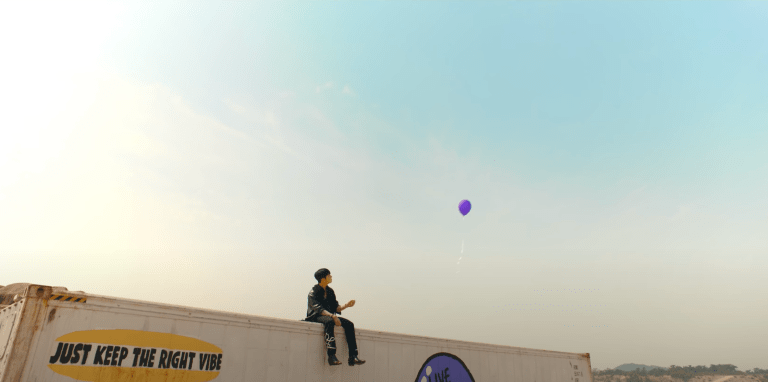Taking the No. 1 spot on the Billboard Hot 100 in place of their own previous release, South Korean group BTS’s new single “Permission to Dance” surpassed other major artists such as Olivia Rodrigo, Justin Bieber and Dua Lipa on the charts after its debut on July 9.
We were full of excitement during our first watch of the “Permission to Dance” music video, first noticing the purple balloons, which are initially released by Jungkook in the opening scene and subsequently show up everywhere. As dedicated fans, this detail immediately caught our eye (that, and the members’ many hairstyle changes); purple has represented BTS’s love for ARMY, their fanbase, for years.
With lyrics like “Let’s break our plans / And live just like we’re golden / And roll in like we’re dancing fools,” “Permission to Dance” is upbeat, vibrant and positive. The music video, which garnered 72.3 million views in its first 24 hours on YouTube, matches this theme with colorful scenery and lighthearted choreography. It also seems to have a deeper message in the context of the ongoing pandemic. In between BTS dancing in the desert, it features people like a waitress, mail carrier and schoolteachers — all of whom are essential workers — masked up and on the job. As the video progresses, this diverse group of people, essential workers and citizens alike, are shown dancing happily.
In the middle of summer in another pandemic year, we found it amazing that BTS put out such a mood lifting song and are consciously promoting positivity to their global audience.
However, the song has received a variety of backlash from fans and critics alike. Criticism poured in about everything from the language it’s written in to the track’s co-writer, Ed Sheeran, to its difference from the group’s discography up to this point. Some fans expressed disappointment at “Permission to Dance” being their third fully English single in less than a year and one that wasn’t produced by group members.
We had our own criticisms about the song, too. It definitely took several streams before “Permission to Dance” stopped reminding us of a children’s movie track that would play on the speakers while we walked out of the movie theater as the credits rolled. We also noticed that the post-chorus of “Dynamite” (“Dyn-na-na-na, na-na-na-na-na, na-na-na, life is dynamite”) is extremely similar to the refrain of “Permission to Dance” (“Da-na-na-na-na-na-na”).
Reading lyrics like that refrain, it’s hard to argue that the songwriting in “Permission to Dance” is phenomenal. But that doesn’t mean there isn’t space in the music industry for songs like it: purely feel-good music with lyrics to sing along to in the car or dance to with your siblings.
BTS is known by ARMY — who often do deep analyses of song lyrics and music videos — to incorporate social messages for their audience. For example, the “Love Yourself” era, a series of three subsequent albums, essentially told a three-part story in lyrics about falling in love, falling out of it and then finding self-love. (And that doesn’t even touch on the cinematic music videos and accompanying theories!)
But BTS’s first two English songs “Butter” and “Dynamite,” and now “Permission to Dance,” seem to be a change in the group’s direction, which is something artists should be given the autonomy to choose if or when to do. BTS’s leader RM said it best in the group’s recent Zach Sang Show interview.
“When we firstly come to Billboard at 2017, we think that — the ‘Love Yourself’ era — that’s the direction and that’s the way we should walk for half the decade … but [the era] really ends really soon,” RM said. “Every choice in this release is our best result and the best direction that we currently are going on.”
“Permission to Dance” is purely a positive, feel-good and joy-evoking song. This might not feel as relatable and honest as other popular music or as BTS’s past discography. However, their mission to bring smiles and laughter to their fans is what makes us proud — and they accomplished it, because after all, “Permission to Dance” succeeded in making at least two ARMYs smile.
